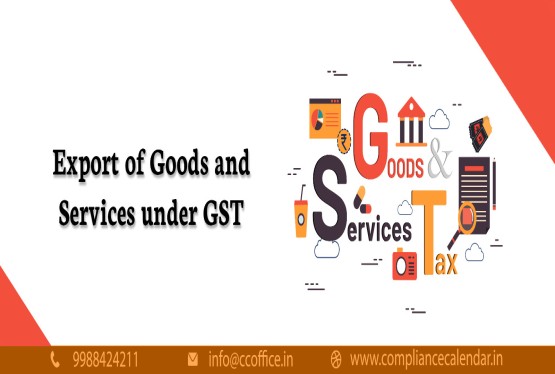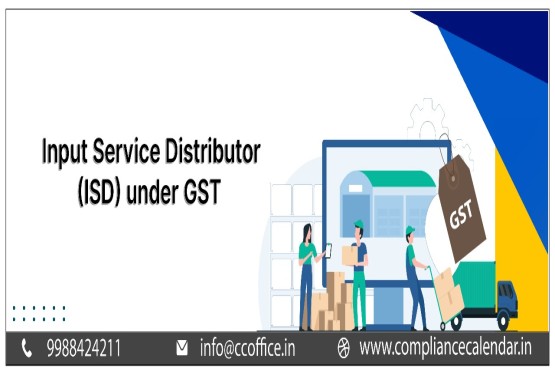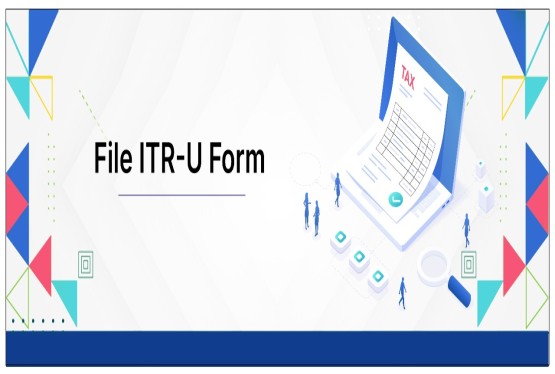Goods and Services Tax (GST) is an indirect tax that has replaced many other indirect taxes in India. GST is levied on the supply of goods and services and is collected at every stage of the supply chain. The GST amount is calculated as a percentage of the taxable value of goods or services and is commonly referred to as the GST rate. For example, if a taxable product is priced at Rs.10,000 and is subject to a 12% GST rate, the GST charged will be Rs.1,200.
GST Rates in India 2025
As of 2025, GST continues to operate through multiple tax rate slabs. The GST Council, which includes members from the Central and State Governments, periodically reviews and revises these rates to ensure fair taxation and economic balance. The recent 55th GST Council meeting led to several rate revisions and new exemptions. These changes impact businesses, industries, and consumers across the country.
Types of GST Rates and Rate Structure
India has adopted a multi-tier GST rate structure. The primary GST slabs are:
-
0% (Nil-rated)
-
5%
-
12%
-
18%
-
28%
In addition to these, certain items attract special GST rates such as 3% and 0.25%. Composition taxpayers, who are small businesses under the Composition Scheme, are taxed at reduced rates like 1%, 5%, or 6% on their turnover. Apart from GST, a Compensation Cess is levied on specific goods like luxury cars, tobacco, and aerated drinks, ranging between 1% to 204%.
List of Goods and Service Tax Rates in 2025
0% GST Rate (Nil-rated) Items that fall under this category are exempt from GST. These include essential goods and services such as milk, curd, eggs, health services, unpacked food grains, natural honey, and children’s books.
5% GST Rate Basic necessity items and services come under this slab. Products like sugar, packed paneer, tea, coal, edible oils, domestic LPG, and essential medicines attract 5% GST.
12% GST Rate Items in this category include processed foods, ghee, mobile phones, fruit juice, umbrellas, and almond-based products. This slab covers products that are semi-essential or widely used but have undergone some processing.
18% GST Rate This is one of the most common GST slabs in India. It covers a wide range of goods and services like toothpaste, soap, pasta, computer equipment, printers, and industrial intermediaries.
28% GST Rate Luxury items and sin goods are taxed at 28%. Examples include small cars, ACs, refrigerators, high-end motorcycles, luxury cars, and aerated drinks. These may also carry additional cess.
Special GST Rates – 3% and 0.25% Precious metals and stones fall under the 3% rate. These include gold, silver, diamonds, imitation jewellery, and articles of precious metal. The 0.25% rate is applied to non-industrial diamonds and unworked precious stones.
Revised GST Rates in India 2025: Notifications and Updates
The Central Board of Indirect Taxes and Customs (CBIC) released several notifications in 2025 based on the recommendations of the 55th GST Council meeting:
-
Notification 1/2025: Fortified Rice Kernel (HSN 1904) is now taxed at 5%.
-
Notification 2/2025: Gene Therapy is now GST exempted.
-
Notification 3/2025: Inputs used in food for free distribution under ICDS are taxed at 5%.
-
Notification 4/2025: Sale of old used EVs attracts 18% GST instead of 12%.
-
Notification 5/2025: Defines 'Specified premises' for hotel accommodations.
-
Notification 6/2025: Skill training by NSDC partners and Motor Vehicle Accident Fund insurance services are exempted.
-
Notification 7/2025: Changes in reverse charge mechanism applicability.
-
Notification 8/2025: Updates 'Specified premises' reference.
Important Rate Changes from 55th GST Council Meeting
-
Fortified Rice Kernels: GST reduced from 18% to 5%.
-
Gene Therapy: Now exempted.
-
Free food distribution inputs: Standardized at 5%.
-
ACC Blocks with > 50% fly ash: Increased from 5% to 12%.
-
Used EV sales between individuals: Reduced to 5% GST.
-
Refurbished EV sales by businesses: Now taxed at 18% on profit.
-
NSDC skill training: Exempted.
-
Penal charges by Banks/NBFCs: Exempted from GST.
Changes from Previous GST Council Meetings
54th Meeting Highlights:
-
Cancer drugs reduced from 12% to 5%.
-
Namkeens now at 12% from 18%.
-
Motorcycle/car seats increased from 18% to 28%.
-
Foreign airlines branch office services: Exempted.
53rd Meeting Highlights:
-
Extra Neutral Alcohol (ENA): Exempted for liquor production.
-
Milk cans and sprinkler systems: Unified at 12%.
-
Railway services like cloakroom and platform ticket: Exempted.
-
Hostel accommodation (up to Rs.20,000/month for 90 days): Exempted.
52nd Meeting Highlights:
-
Millet flour (blended): 0% if loose, 5% if packaged.
-
Molasses: Reduced from 28% to 5%.
-
ENA for industrial use: Attracts 18%.
-
Bus operators on e-commerce: Allowed ITC claim.
-
Railways services now under forward charge.
50th Meeting Highlights:
-
Snack pellets, fish paste: Reduced from 18% to 5%.
-
Imitation zari: Now at 5%.
-
Satellite services by ISRO and others: Exempted.
-
Food in cinema halls: Treated as restaurant service if served independently.
GST Classification Based on HSN Chapters
Each product and service in India is identified under the Harmonized System of Nomenclature (HSN). The HSN code helps classify goods and determines the applicable GST rate. Here are some examples:
-
Chapter 1-5: Animal-based products (meat, fish, eggs)
-
Chapter 6-14: Agricultural products, plants, vegetables
-
Chapter 15-24: Food products and beverages
-
Chapter 25-27: Salt, mineral fuels
-
Chapter 28-38: Chemicals
-
Chapter 39-49: Plastics, paper, and printed material
-
Chapter 50-63: Textiles and garments
-
Chapter 64-71: Footwear, headgear, jewellery
-
Chapter 72-83: Base metals and tools
-
Chapter 84-92: Machinery, electronics, vehicles, instruments
-
Chapter 93-99: Defense items, furniture, toys, services
GST Rates in India: Impact on Businesses and Consumers
Knowing GST rates in India is essential for all stakeholders. Businesses must classify their goods/services correctly under HSN/SAC codes to ensure accurate tax compliance. Consumers should also be aware of the rates to know what tax they are paying.
Any change in GST rates can affect pricing strategies, profit margins, and input tax credits. Staying updated with GST rates in India 2025 helps maintain compliance and avoid penalties.
Conclusion
GST rates in India are dynamic and governed by the decisions made during the GST Council meetings. With rate rationalisation discussions underway, we can expect simplified slabs in the future. For now, taxpayers should focus on understanding the current GST rate structure, its implications on various goods and services, and the updates from recent notifications. Always refer to official sources or consult GST professionals for the latest rate applicability. You can connect Compliance Calendar LLP experts through mail info@ccoffice.in or Whatsapp/Call at +91 9988424211.
FAQs
Q1. What are the current GST rates applicable in India in 2025?
Ans. The GST rates in India for 2025 are divided into multiple slabs: 0% (nil-rated), 5%, 12%, 18%, and 28%. Additionally, there are special rates such as 3% for precious metals and 0.25% for certain stones. Composition scheme taxpayers pay reduced rates like 1% or 5% depending on their turnover and business type.
Q2. Which essential goods are exempted from GST in 2025?
Ans. Essential goods such as milk, curd, lassi, eggs, unpacked food grains, natural honey, salt, and health and educational services are fully exempt from GST and taxed at 0%.
Q3. What major changes were introduced in GST rates in the 55th GST Council meeting?
Ans. Key changes include a reduction of GST on Fortified Rice Kernels from 18% to 5%, exemption of gene therapy, and skill training services by NSDC partners. Also, sales of used electric vehicles between individuals now attract 5% GST, and refurbished EV sales by businesses attract 18% GST on profit margins.
Q4. What are the GST rates applicable to luxury items in India?
Ans. Luxury and sin goods such as high-end cars, aerated drinks, air conditioners, and refrigerators are taxed at 28%, with some items also carrying an additional cess up to 204%.
Q5. What is the GST rate on mobile phones and computer accessories in 2025?
Ans. Mobile phones are taxed at 12% GST. Computer accessories such as printers and monitors are generally taxed at 18%, as per the HSN classifications.
Q6. Are there any GST exemptions for educational or health services in 2025?
Ans. Yes, GST continues to exempt services related to core education (provided by schools, colleges, or institutions recognized under law) and health services (such as hospital treatment or diagnostic services).
Q7. What is the impact of GST rate changes on businesses?
Ans. Businesses must update their pricing and accounting systems whenever GST rates change. Incorrect tax classification can lead to penalties. Staying compliant ensures eligibility to claim Input Tax Credit (ITC) and avoids disputes during GST audits.
Q8. How can one check the latest GST rate for a product or service?
Ans. The latest GST rates can be checked using the HSN (Harmonized System of Nomenclature) or SAC (Service Accounting Code) on the CBIC portal or GST rate finder tools available online. These tools help businesses apply the correct rate while generating invoices or filing returns.









_crop10_thumb.jpg)


















































































_for_FY_2025-26_crop10_thumb.jpg)












_learn_crop10_thumb.jpg)








_Filing_Due_Dates_for_FY_2024-25_learn_crop10_thumb.jpeg)

















